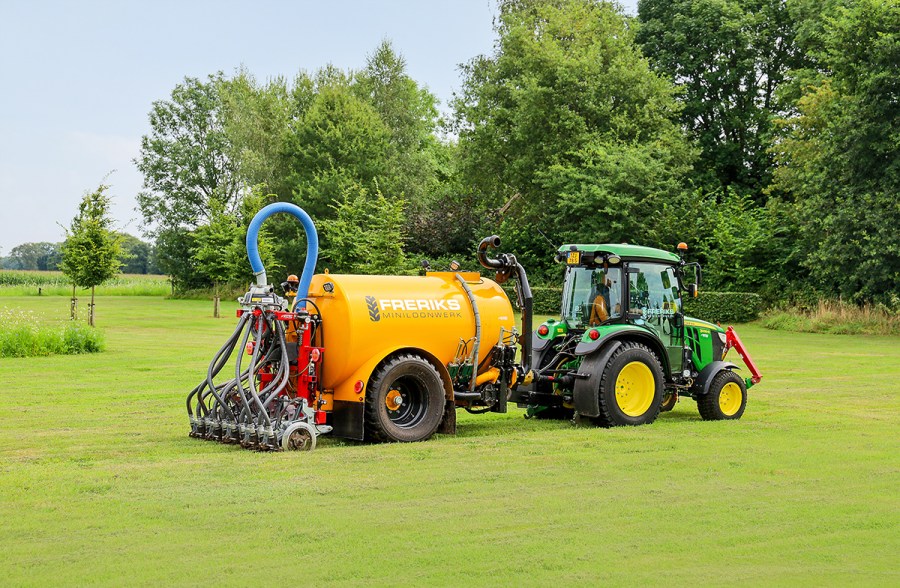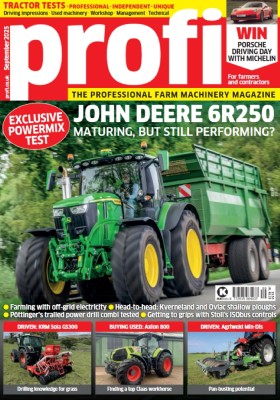Showing that you don’t always need big kit, Yordi Freriks is a service provider for cities, municipalities and private customers. We experience slurry spreading on a small scale
KEEPING IT BRIEF
- The home-made tanker has a volume of 3.0m³.
- In good conditions output is up to 10m³/hr.
- Customers are municipalities or private landowners.
Miniloonwerker (mini contractor) is the perfect Dutch phrase for describing the business of Yordi Freriks in the Netherlands. He is a professional service provider for cities, municipalities, equine farms and private landowners, for whom he has a big focus on being smaller than most of his fellow slurry contractors in the Netherlands.
But it isn’t just a slurry operation. His other main services include scarifying, reseeding, milling, mulching, mowing, hedge trimming and spreading sand and manure. For these varied tasks, the John Deere tractor clocks up around 1,200 hours per season. The city councils within the Netherlands usually don’t operate their own machinery fleets, instead relying on service providers.
For most of the year, Yordi is a one-man operator, only taking on temporary staff during the season when needed. His company is located in Heelweg, about 30 kilometres from the German border where he shares the yard with his uncle and brother, who operate a separate contracting business called Gebr Freriks VOF. This larger-scale contracting operation covers all types of work from sowing through to harvesting and employs eight people. It also happens to own an agricultural machinery dealership including a workshop where Yordi’s slurry tanker was built.
Custom engineering
Yordi was often asked by his customers whether he could spread slurry on small lawns. When the demand reached a certain level, Yordi and his brother’s team sat and discussed how they could carry out such slurry application work on small areas.
Together with a friend, the Freriks team developed and designed a 3.0m³ slurry tanker as a 3D model. Based on this drawing, the team set about building the slurry tanker from scratch. It took about a year from the first draft to the finished tanker, although it only needed about three months to build the machine.
The hardware
The end result is impressive: a slurry tanker with a volume of just 3,000 litres that is in no way technically inferior to its much larger capacity siblings. It is filled with a 35m³/hr Börger rotary lobe pump. The suction arm can either couple up to the docking station (which was also built in-house) or suck slurry directly from a storage pit once the hose extension is fitted. Either way, the operator can stay in the cab when filling.
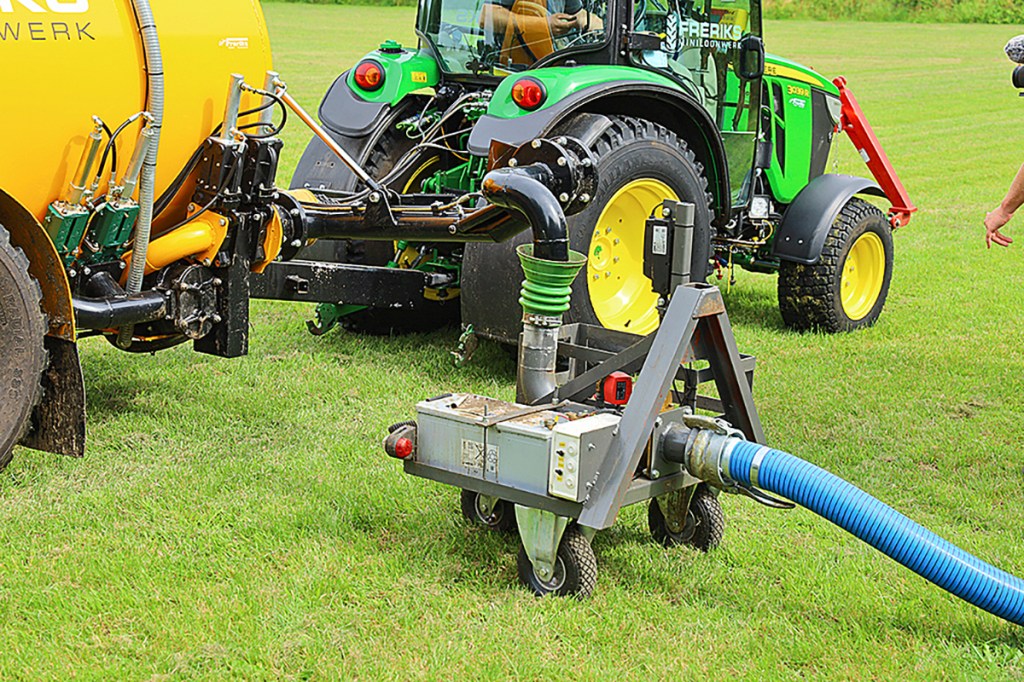
A handy sensor on the fill level indicator automatically stops the filling process when it’s full. A 1.50m wide disc injector applicator is raised and lowered by a lifting mast that can also transfer weight from the tanker to the injector to increase the coulter pressure, which is set on a valve block.
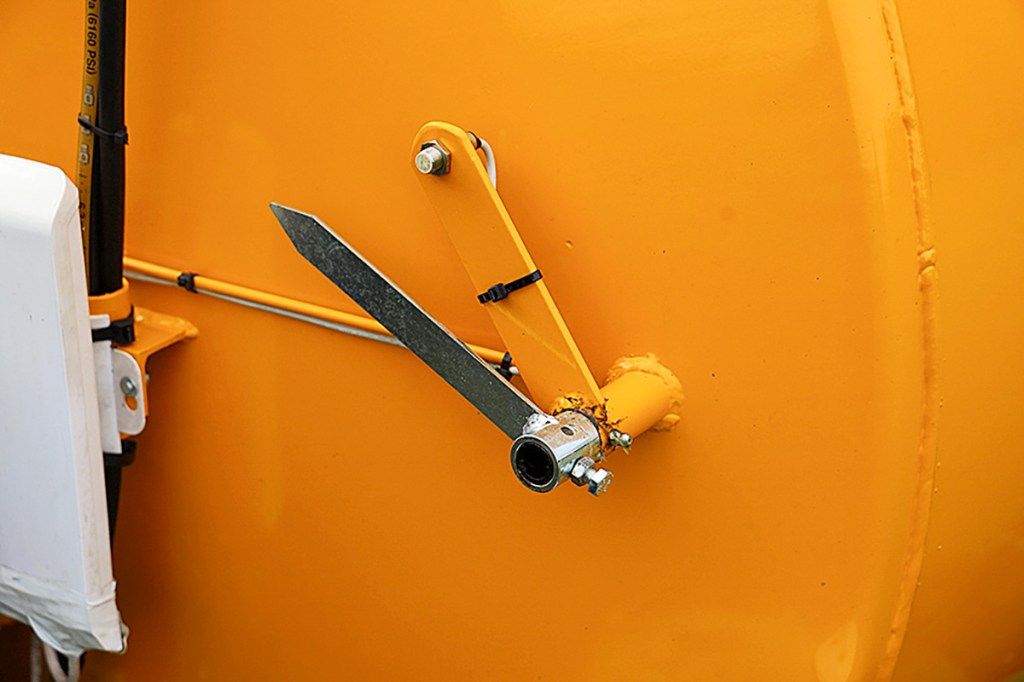
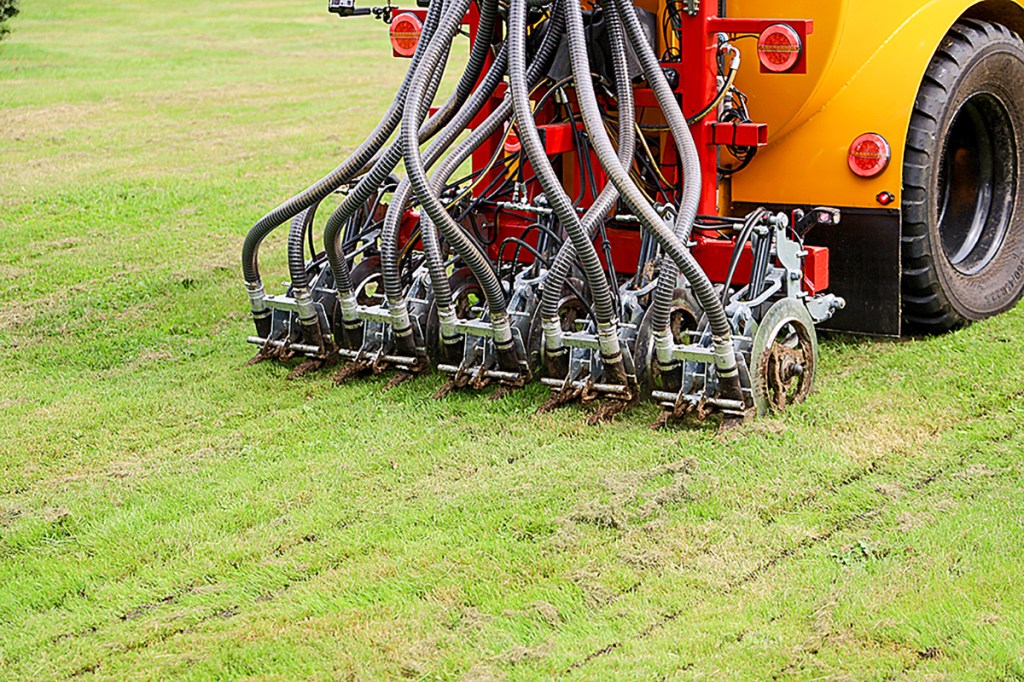
“Transfer is particularly important in horse pastures in order to get the discs into the ground at all,” says Yordi, as the ground in these pastures is often heavily compacted. The disc elements are sourced from TBL, the distributor is a Vogelsang unit.

A drip stop was incorporated into the design so liquid isn’t spilled when turning on the headland area. The tank also has a pivoting drawbar for better manoeuvrability and to allow the tank to run alongside the tractor wheelings.
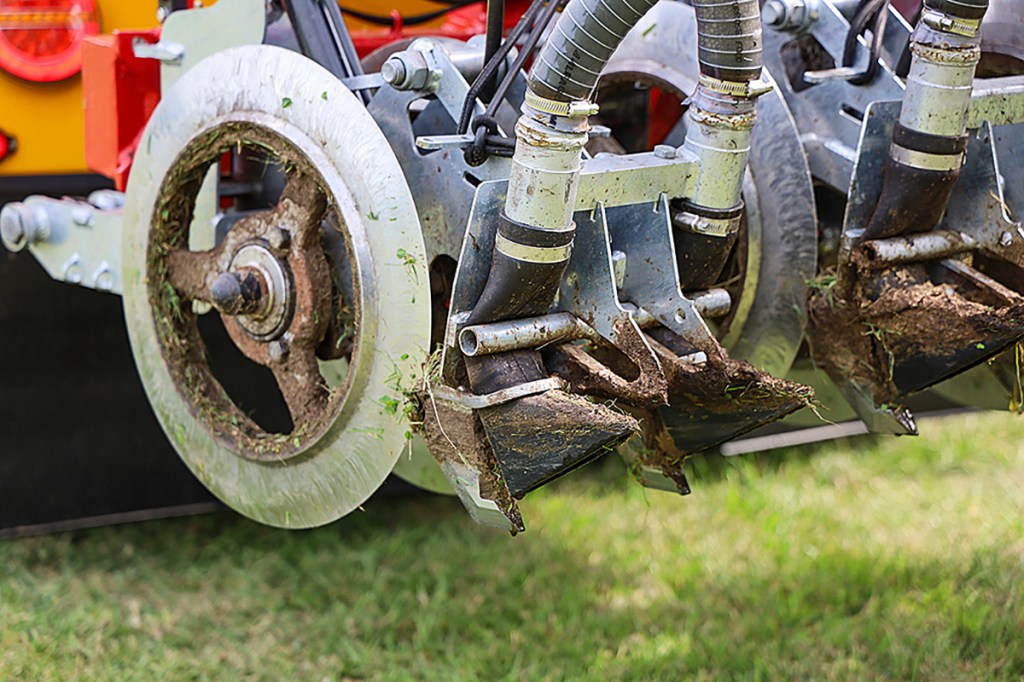
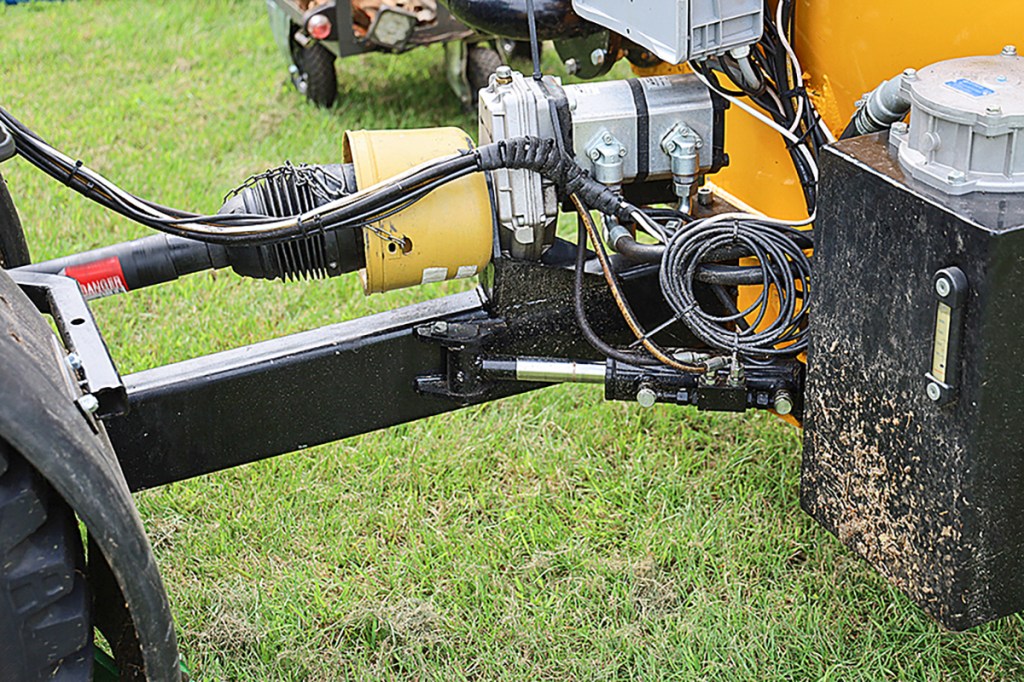
All functions are carried out by a hydraulic system, which is supplied with oil by two pto-driven pumps (60l/min). The oil tank holds 120 litres and even has its own oil cooler in place.
Most functions are controlled using inhouse-programmed software from a tablet that is connected to the tanker via Wi-Fi.
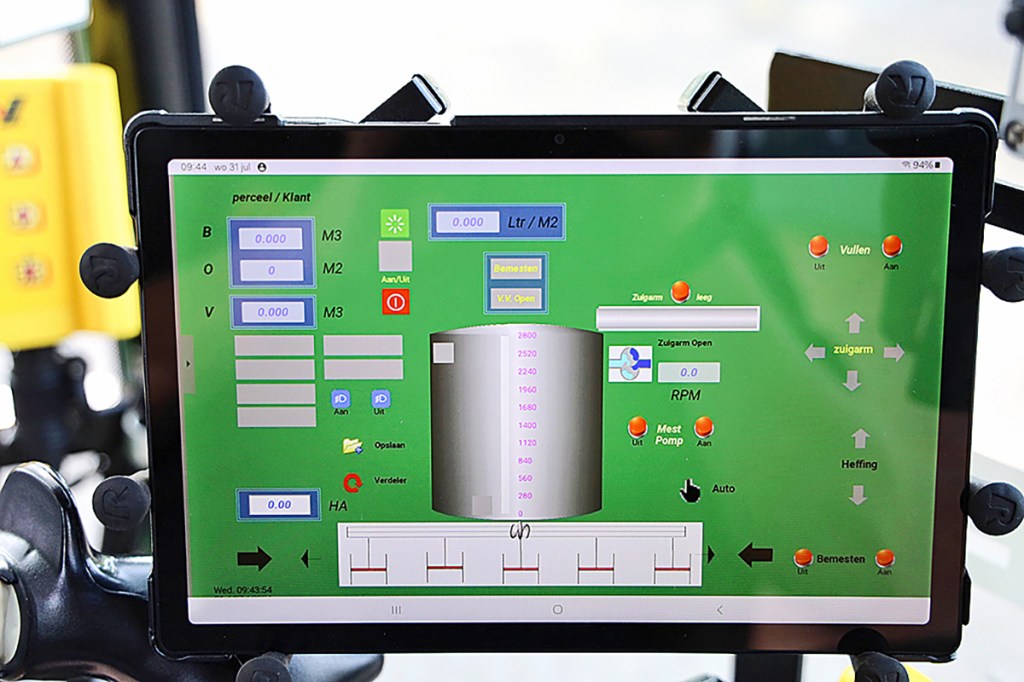
The application rate is controlled by the pump speed. Initially Yordi believed that they could control the pump speed by the pto, but in reality it didn’t work. So, after the first test run, they fitted a proportional valve that is controlled from a dial in the cab. The tanker is also equipped with section control, but the contractor doesn’t have a GPS receiver as yet. LED work lights and a camera on the distributor round off the highly specified machine.
Road transport
One thing it doesn’t have is brakes; even so, in the Netherlands it is allowed to travel at up to 25km/hr when equipped with a white number plate. This isn’t a major problem because the tractor can’t do more than 30 km/hr anyway. The Miniloonwerker is used within a radius of 50 kilometres from the central base. For longer distances, the outfit is shifted on the company’s own truck.
Too little power
In front of the yellow tanker is a John Deere 3039R, whose three-cylinder, turbo-charged engine delivers just under 38hp. That isn’t sufficient for the tanker, so Yordi had the tractor chipped to about 45hp.
To protect the grass sward, the tractor is booted with municipal tyres. Although the entire combination weighs in at just under 7 tonnes when filled to capacity, the tank’s 560/45 R22.5 tyres tread gently.
In operation
We were allowed to accompany Yordi and his unique combination on a job, travelling to a new customer in Terborg, 15km away from the yard base. The job for the private landowner was to fertilise the 3ha ‘park’. The customer had heard of Yordi’s company by word of mouth from a friend who had already used the Miniloonwerker service.
The grassland was previously fertilised with minerals. We spread approximately 20m³/ha of separated cattle slurry at 3-4km/hr. The limiting factor at the moment is the tractor. Something with a bit more power would be able to travel at about 6km/hr. On this job, Yordi was achieving three loads per hour or just under 10m³/hr.
The slurry was carted out to the field by a farmer operating a 32m³ bowser that he left parked at the edge of the field and collected it when it needed to be refilled rather than waiting around. In future, the landowner said he would like to have Yordi spread slurry several times a year.
The big advantage for the Dutch farmers is that slurry can be applied to these garden and municipal grounds rather than shipping it over the border to Germany, although the price is on a par. Usually between 20 and 40 m³/ha is applied. The contractor charges an hourly rate for his specialist service.
Summary
Yordi Freriks designed and built a miniature slurry tanker that is just as technologically advanced as bigger Dutch-made tankers. The service has been well received with a growing customer base despite Yordi not advertising it yet. The tanker combination is compact and manoeuvrable and does an excellent job in small areas.
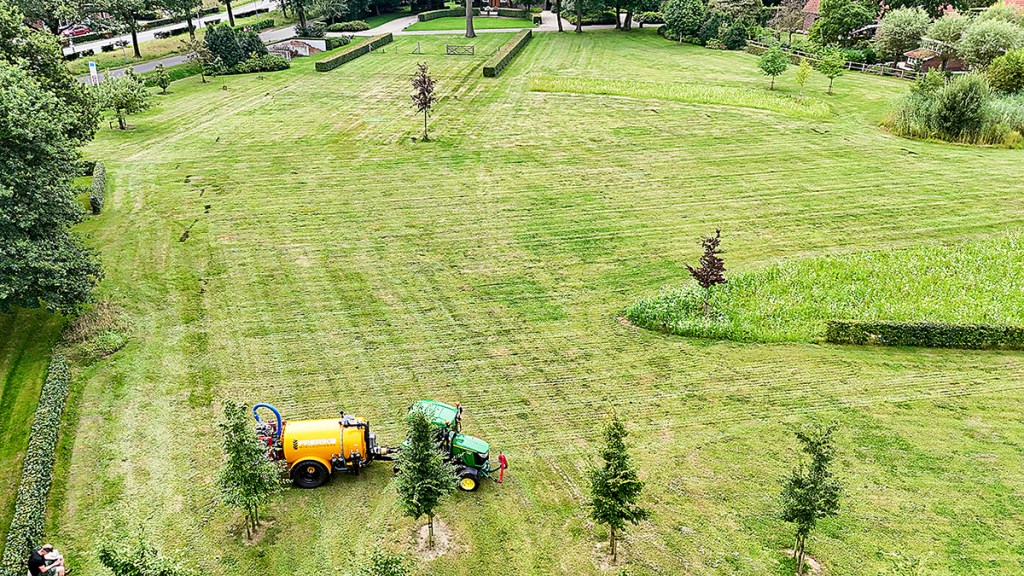
Yordi estimates that the project has cost him around €80,000. This includes the three months of labour to build the machine and the more than €40,0000 in components. The demand for the service is high, and there is more than enough slurry available to ‘feed’ the little tanker.
Sebastian Rüther
For more up-to-date farming news click here and subscribe now to profi and save.

